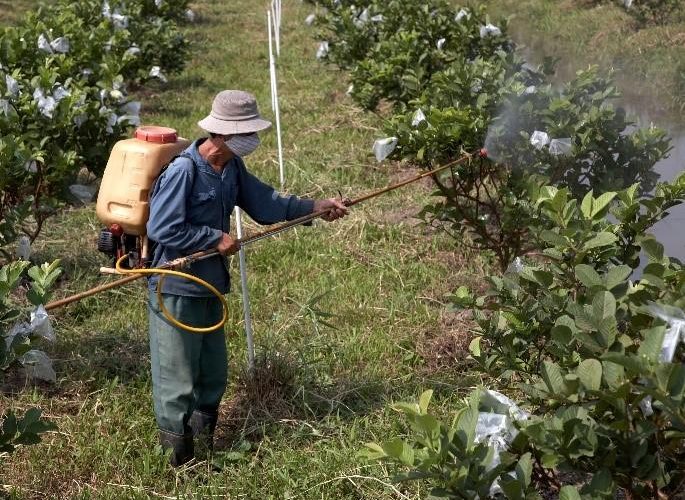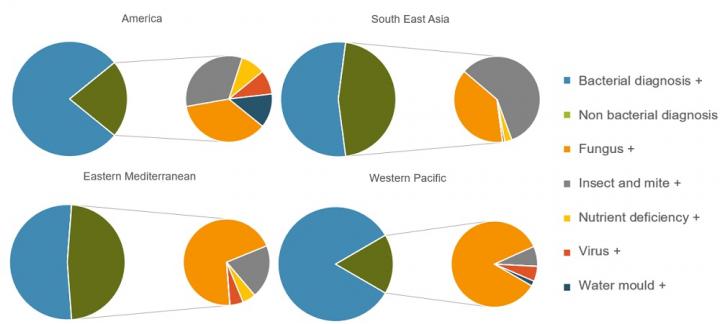Is global antibiotic use in crop production haphazard?
- Like
- Digg
- Del
- Tumblr
- VKontakte
- Buffer
- Love This
- Odnoklassniki
- Meneame
- Blogger
- Amazon
- Yahoo Mail
- Gmail
- AOL
- Newsvine
- HackerNews
- Evernote
- MySpace
- Mail.ru
- Viadeo
- Line
- Comments
- Yummly
- SMS
- Viber
- Telegram
- Subscribe
- Skype
- Facebook Messenger
- Kakao
- LiveJournal
- Yammer
- Edgar
- Fintel
- Mix
- Instapaper
- Copy Link
Posted: 24 June 2020 | Bethan Grylls (New Food) | No comments yet
A study has revealed that antibiotic use on crops is more widespread than previously thought and claims they have been used against crop problems where they will have no effect.


Credit: Rob Reeder/CABI
The numbers of countries that are monitoring the use of antibiotics in crop cultivation is very low compared to those monitoring antibiotic use in the veterinary and medical arenas, according to a joint investigation by the FAO, OIE and WHO.
Of the 158 countries questioned, only three percent indicated they had any kind of regular assessment of the types and amounts of antibiotic use on crops.
This is a strong contrast against countries that have monitoring systems in place for human use and animal health – 26 and 23 percent respectively.
This lack of data on the use of antibiotics in crop-based agriculture, according to the study, has led many to assume the amounts being used were negligible.
This research analysed more than 436,000 records from Plantwise clinics in 32 countries between 2012 and 2018. It revealed that antibiotics, some of which are considered critically important for human medicine, are being recommended for use on over 100 crops, and, in some cases, in copious quantities and as prophylactic treatments.
The research estimates that 63 tonnes of streptomycin and seven tonnes of tetracycline are sprayed on rice crop in South East Asia alone every year. In some regions, almost 10 percent of rice recommendations featured an antibiotic.


Breakdown of problems against which antibiotics were recommended by region. The larger pie chart shows the proportion of problems that were bacterial and the smaller pie chart shows a breakdown of the non-bacterial problems. Credit: CABI Agriculture and Bioscience
There is also an alarming level of recommendations for antibiotic use against crop problems where they will have no effect, for example against insect pests.
The researchers found that 11 antibiotics (often blended together) are being recommended on crops grown in the Americas, Eastern Mediterranean, South East Asia and the Pacific rim countries. The regional variation is considerable both in quantity and class of antibiotic, but it was noteworthy that no antibiotic recommendations were recorded from Africa, despite the large number of records from this region.
“It is very interesting that there are no records from Africa, you may suspect that this was due to price, yet that does not appear to be the reason,” said Dr Philip Taylor, the study’s lead


Spray residue on rose following a recent spraying of a fungicide and a streptomycin/tetracycline blend in South East Asia. Credit: CABI Agriculture and Bioscience
author.
Although the quantities used on crops globally are comparatively small relative to medical and veterinary use, the researchers believe this niche does provide some opportunity whereby resistance could develop in human pathogens.
When antibiotics are combined with other agro chemicals, it is possible for bacteria to develop resistance to the antibiotic up to 100,000 times faster. Along with the consumption of raw food, this could offer a unique avenue for the production of resistant bacteria.
Co-author, Dr Rob Reeder, said, “Further research into the scale of antibiotic use in crop protection is warranted as the potential for interactions with other crop protection products that might promote cross-resistance or co-selection for antibiotic resistance is considerable.”
Some argue that there is no evidence which suggests resistance can be spread from plant pathogenic bacteria to human or animal pathogens. Commenting on this, Reeder said: “It is hoped that the data presented in this paper will increase the debate regarding the use of antibiotics against crop pathogens and that crop production will be included under the one health umbrella.”
Related topics
Related organisations
Food and Agriculture Organization (FAO), World Health Organisation (WHO), World Organisation for Animal Health (OIE)







